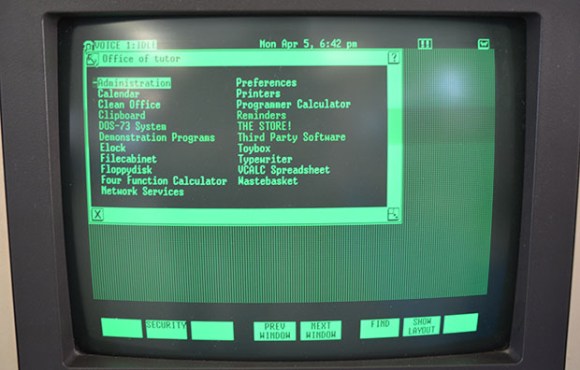
At the Vintage Computer Festival last weekend, there was a wonderful representation of small 8 and 16-bit home computers from the 80s, an awful lot of PDP and VAX-based minicomputers, and even some very big iron in the form of a UNIVAC and a Cray. You might think this is a good representation of computing history, but there was actually a huge gap in the historical reality. Namely, workstations and minicomputers that weren’t made by DEC.
[Ian Primus] was one of the very few people to recognize this shortcoming and brought his PRIME minicomputer. This was a huge, “two half racks, side by side” computer running PRIMOS, an operating system written in FORTRAN. Of course this made it extremely popular with engineering teams, but that doesn’t mean [Ian] can’t have fun with it. He had two terminals set up, one running Dungeon (i.e. Zork pre-Infocom) and a text-based lunar lander game.
Because the VCF East is held in New Jersey, it’s probably no surprise a few vintage AT&T Unix boxes showed up. [Anthony Stramaglia] brought in a few very cool vintage Unix workstations, dating from the early to mid 80s. In the video, he shows off two AT&T boxes. The first is a UNIX PC, containing a 68010 clocked at a blistering 10 MHz. Next up is the UNIX PC’s bigger brother, the 3B2 400. This is the workstation found on just about every desk at Bell Labs in the 80s, meaning this is the same computer [Ken Thompson] and [Dennis Ritchie] used for their work on UNIX.




















